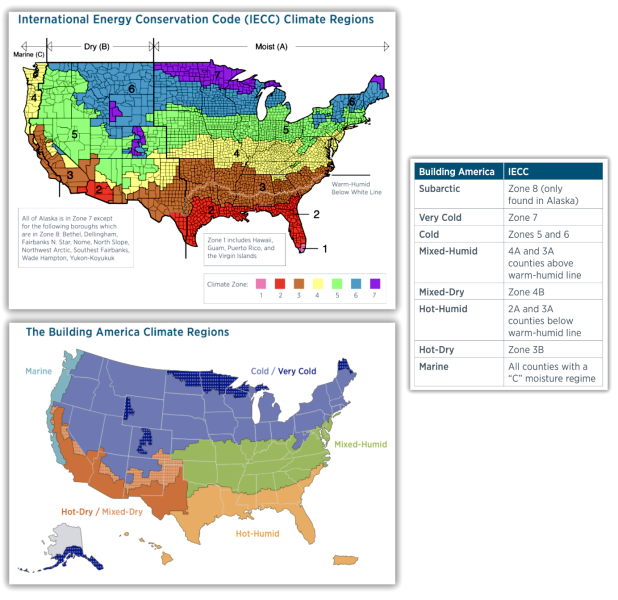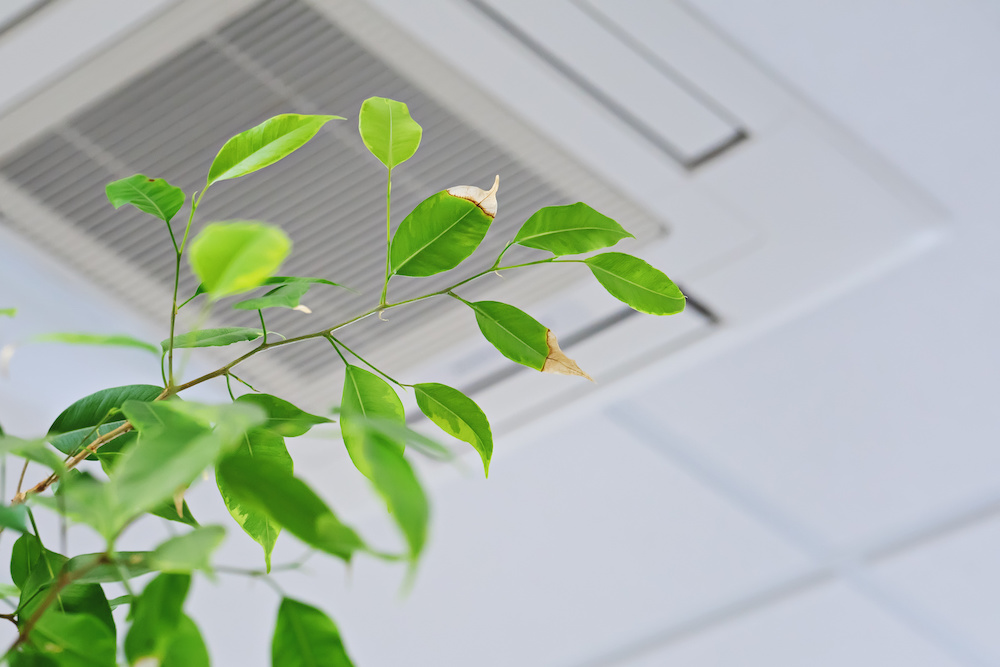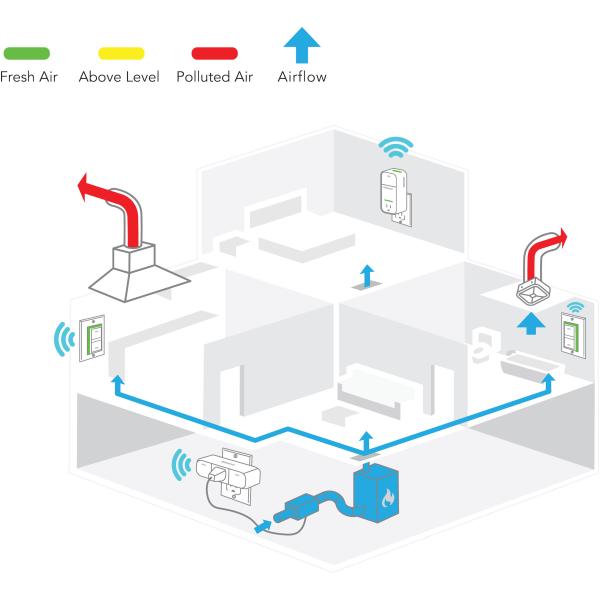Air purification and ventilation are often confused, but the two have very different effects on indoor air quality. In the simplest terms, air purification cleans and reuses the same air, while ventilation pushes the old air out and brings in fresh, filtered air. People in the U.S. spend about 90% of their time indoors, and with the COVID-19 pandemic and increasingly frequent and large wildfires, indoor air quality has become a serious concern for homeowners and buyers. Understanding the difference between purification and ventilation is crucial to understanding how to build homes that offer good indoor air quality.
READ MORE: BRIDGING THE IAQ KNOWLEDGE GAP
Air Purification
Air purification, or filtration, is the process of removing particulates and gases from the air. Air purification cleans and recirculates the air but does not introduce new air into the home. It is also unable to remove all gases and finer particulates that are too small for most filters to capture. Some stand-alone options for air purifiers can catch quite a bit of the pollution in the air via true HEPA filters. Consumers often purchase these products on their own to treat the air in specific rooms of their homes, but they often rely on construction professionals to advise on the best products on the market, particularly with furnace and air conditioner filters.

According to the Department of Energy, "The Building America-developed climate zone map has had a profound impact on high-performance homes by, serving as a consistent framework for energy efficiency requirements in the national model energy code starting with the 2004 IECC Supplement and the ASHRAE 90.1 2004 edition. The map also provides a critical foundation for climate-specific guidance in the widely disseminated EEBA Builder Guides and Building America Best Practice Guides."
Image: courtesy Department of Energy
Ventilation
Ventilation is literally a breath of fresh air. Air ventilation pulls stale, polluted air out and brings fresh, filtered air in.
There are two main categories of ventilation:
Spot (local) Ventilation — Spot ventilation pulls polluted air out of specific rooms, making room for fresh air. In this case, we’re discussing bath fans and kitchen range hoods with an exterior exhaust. Ventilation fans remove pollutants from humidity-prone spaces such as craft rooms, garages, nurseries, mud rooms, and laundry rooms. Bathrooms and kitchens produce high amounts of air pollutants in the form of humidity (ie, showers, boiling water, steam, etc) and cooking fumes (ie, sizzling bacon grease, oven smoke, gas range fumes, etc). This is the most common type of ventilation and is included in almost every residential building code.
Whole-Home Ventilation — Whole-home ventilation handles the entire home rather than a specific room. Whole-home ventilation brings fresh, filtered air into the home while removing stale, polluted air.
There are three basic types of whole-home ventilation:
Continuous Exhaust — The first is a continuously running exhaust fan. Generally, this fan runs continuously at a lower CFM, drawing stale air out of the home and replacing it with fresh air from relatively unknown sources. They work best in lower-humidity climate zones. While this type of ventilation works, it comes with some added risks. Fresh air must find its way into the home wherever it can, which means it may come through cracks in walls, around windows and doors, or through basements and crawl spaces. None of those inlets filters the air, and all of them carry the risk of adding pollutants to the air, such as moisture, fumes, and small particles. An air purifier, coupled with a continuously run fan, can be a good combination but doesn’t address excess humidity or temperature variances and still has risks associated with the incoming air.
Supply Ventilation — The second type of whole-home ventilation is a fresh air supply fan, which pushes fresh air from outside into the home. These fans have filters and can often have high-level MERV filtration to clean the air before it enters the home. Supply fans generally are ideally suited to more humid climates. They are an improvement over a continuously running fan because they provide a known source of fresh air and pressurize the home, keeping air from infiltrating from unknown places (e.g., cracks in the wall). Supply ventilation coupled with a continuously running exhaust fan and air purifier is a simple way to create balanced ventilation and remove much of the pollutants entering the home outside of moisture.
Balanced Ventilation — Balanced ventilation is the healthiest and most energy-efficient solution that will work in any climate zone. These systems also offer great air purification on top of ventilation by removing particulates via filters for the incoming air. Many current models are compatible with a HEPA filter. Best of all, HRVs and ERVs maintain fresh air and heat/humidity as efficiently as possible, so you’re not paying to reheat or re-cool all the incoming fresh air. Rather, you use the outgoing air to temper it, which you already paid to heat/cool. They also help meet new code requirements for how much fresh air you should bring in (the average home should maintain 60 CFM of airflow out and in). This particularly applies to newer homes where building codes require a tighter building envelope. A balanced ventilator with strategically placed spot ventilation and stand-alone air purifiers can significantly improve any home’s indoor air quality and the quality of life of those living there.
This diagram shows how the Broan-NuTone Overture system provides whole-home ventilation.
Image: courtesy Broan-NuTone
Knowing the difference between clean and fresh air is key to providing great indoor air quality to your customers. Fresh isn’t always clean, and clean isn’t always fresh. Make sure you’re providing both by installing systems that vent out polluted air, introduce fresh air, and work to clean the air in the home.
Dave Jones is the assistant director for Go-To-Market at Broan-NuTone. He can be reached at dave.jones@broan.com.








